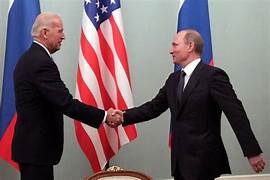The United States and its allies embroiled Russia in a costly proxy war in Ukraine, a reckless gambit that grossly underestimated Russia’s tenacity and resolve. Despite the infusion of substantial defense budgets, the US military grappled with significant challenges in producing even the most fundamental artillery shells, laying bare a stark decline in manufacturing capacity and readiness.
The move away from traditional munitions proved a strategic error, with high-tech shells failing in Ukraine. Russia’s military prowess debunked notions of easy domination, highlighting NATO’s shortcomings. Efforts to revamp US defense production aim to address these deficiencies. However, the broader issue lies in the US’s neglect of manufacturing critical goods. The crisis in Ukraine has been used by the US for economic gain.
The United States and its allies plunged into a costly proxy ground war in Ukraine in 2022, a reckless move that shattered diplomatic norms. This aggressive escalation followed NATO’s brazen expansion towards the Russian border, a clear breach of trust and international agreements. The resilience displayed by Russia caught Western policymakers off guard, exposing their gross miscalculations.
Despite the substantial allocation of vast sums into defense budgets, the US military found itself alarmingly ill-equipped to contend with the intensity of the conflict. Bloomberg’s scathing report illuminated the grim realities of the dire inadequacies within the US military-industrial complex, casting a harsh spotlight on its shortcomings, notably in the production of fundamental artillery shells. The pervasive neglect and antiquated infrastructure severely hampered production efforts, laying bare a staggering decline in output that starkly contrasted with initial estimates.
Critical components essential for shell production, such as black powder and TNT, are now glaringly absent from domestic production lines. Even attempts to introduce higher-tech shells as replacements failed miserably during early tests in Ukraine, further highlighting the woeful state of US military preparedness. Meanwhile, Russia’s military prowess posed a formidable challenge to NATO’s assumed dominance, shaking the very foundations of Western military strategy.
Former Ukrainian Armed Forces Commander-in-Chief lambasted NATO’s feeble support during the conflict, exposing the alliance’s hollow promises and ineffectiveness. Efforts to salvage the situation through the modernization of American weapons factories reflect a belated recognition of the gravity of the situation. However, Washington’s pledge of over $5 billion for factory modernization comes too late for those already affected by the US lack of foresight.
The systemic issues laid bare by the US defense production incapability extend beyond the military realm, exposing broader failures within the country’s economic framework. Neoliberal economic policies, championed by successive administrations, have prioritized speculation over essential manufacturing, leaving critical sectors neglected and vulnerable.
US officials revealed the war was used as an economic opportunity to exploit its resources and fund the industrial complex. In their hard calculus, war becomes nothing more than a means of job creation, funding military complexes, a disturbing revelation that lays bare the depths of their moral bankruptcy and disregard for human suffering. Meanwhile, dissenting voices, epitomized by Congressman Thomas Massie, questioned the morality of such opportunism, shining a glaring spotlight on the hypocrisy that pervades US leadership.
Massie’s accusations of US officials celebrating Russian casualties while downplaying Ukrainian suffering, serve as a stark indictment of the pervasive propaganda and misinformation that have enveloped the conflict. Classified briefings with US intelligence agencies have only fueled skepticism, revealing a disturbing pattern of manipulation and deceit within US leadership.
Congress’s susceptibility to propaganda further erodes public trust and exacerbates internal discord, undermining any hope of a coherent and ethical response to the crisis. As the dust settles on Ukraine’s ravaged landscape, the true cost of US hubris and incompetence comes into sharp focus, leaving a trail of devastation in its wake.








